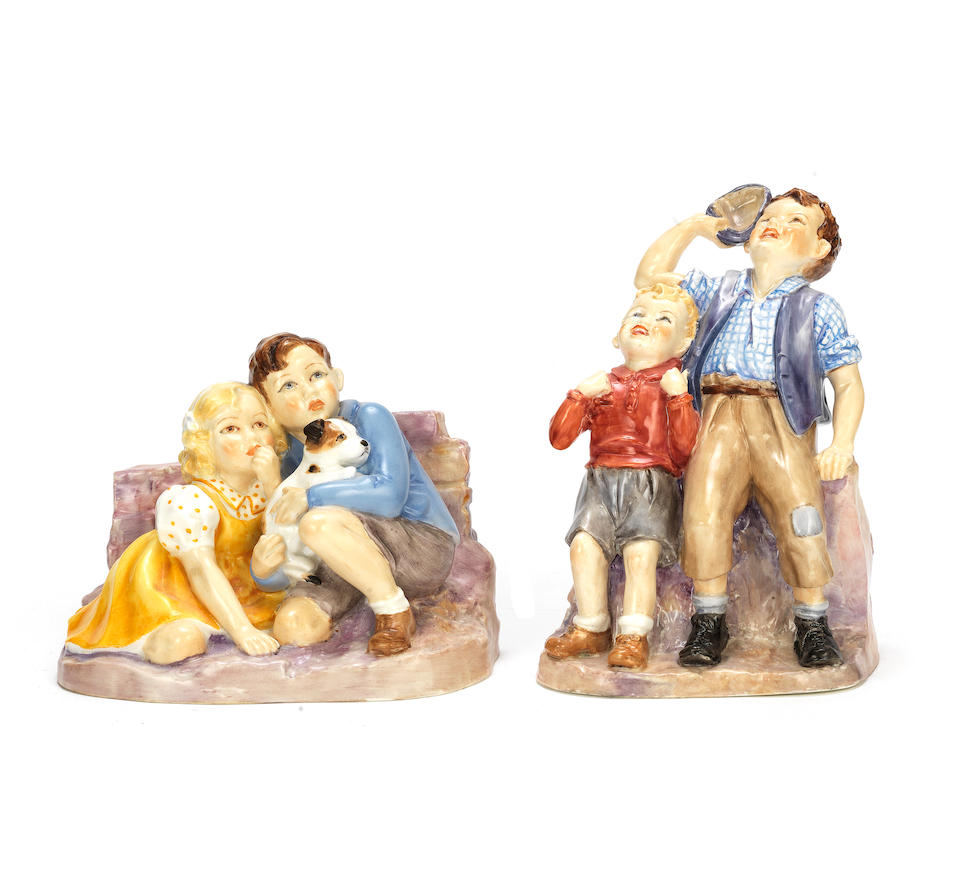History
Royal Worcester porcelain – The first production of porcelain in Worcester took place in 1751. An eminent surgeon, Dr John Wall, perfected the secret recipe for the production of soft paste porcelain and a factory was founded on the banks of the river Severn. The river was essential for transporting both production materials and wares.
Having gained a reputation for producing quality tableware, Worcester flourished under the guideance of a series of owners. The companies were Chamberlains, Flight Barr, Lockie and Grainger, and Binns Kerr. All made improvements to the manufacture of porcelain, adding new glazes, shapes and designs.
The Worcester factory was able to engage the services of excellent artists and some of the finest porcelain was produced there. Royal patronage was added, firstly by king George III in 1789 and has been continually reviewed and renewed with each change of monarch.
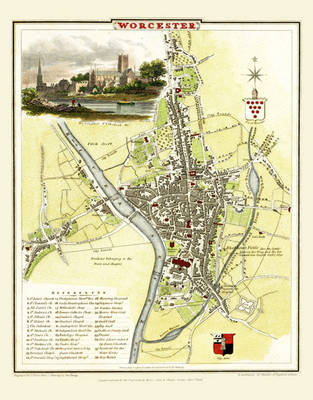
City of Worcester
In 1862 The Royal Worcester porcelain company was formed. The factory continued producing mainly tableware during the nineteenth century and a few figurines were introduced, mostly by James Hadley.
By the start of the twentieth century sales were in decline and in 1930 the factory went into receivership. CW Dyson Perrins bought the factory and set about reforming production there. It was during this period that new modellers were brought in, many of them freelance artists, and from then on Worcester porcelain saw a revival to it’s heydays of the eighteenth century.
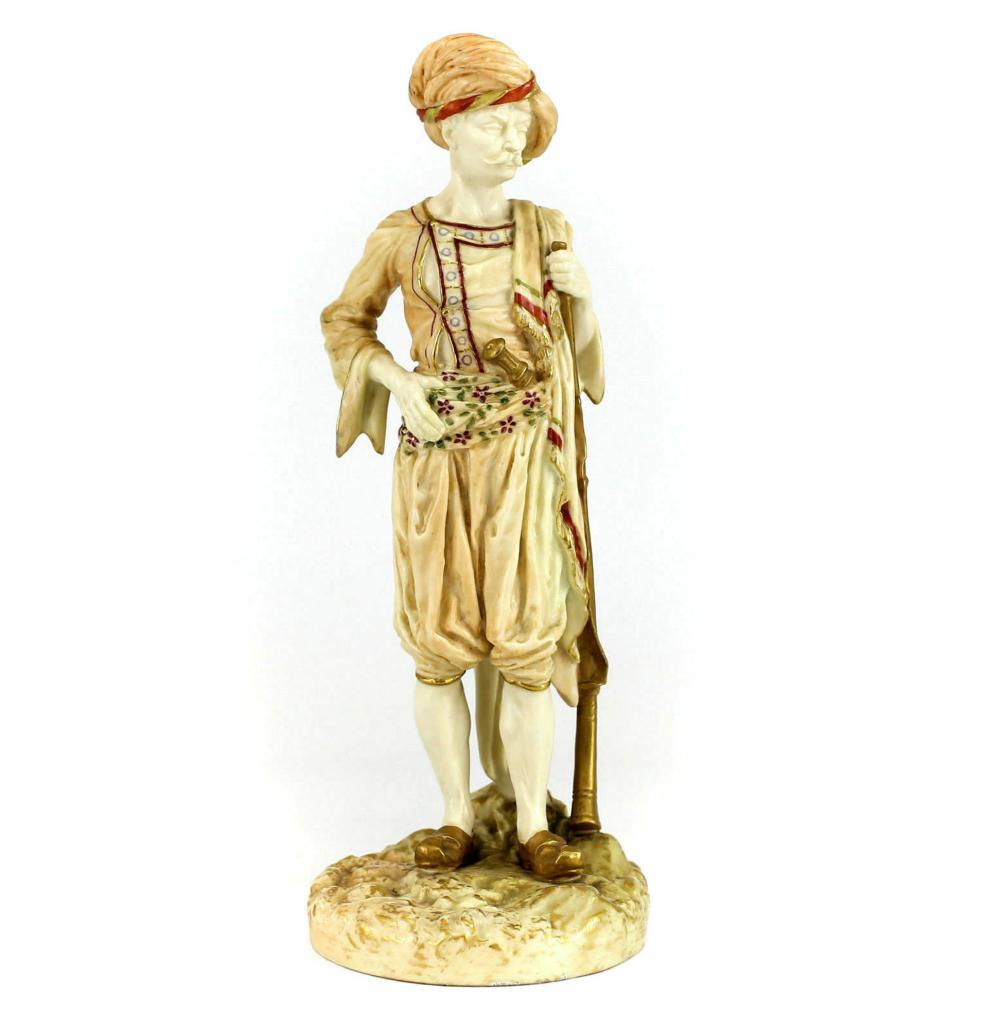
James Hadley ( 1837 – 1903 )

Dorothy Doughty (1892-1962) and Freda Doughty (1895-1972)
Over the next five decades it’s most successful artists were the Doughty sisters, Dorothy and Freda, Doris Linder, Gwendolen Parnell, and Eva Soper.
Tableware was revolutionised by ovenproof porcelain in 1931 and for the first time decorative porcelain cookware was produced which was hugely successful.
Production at the Royal Worcester works on the Severn ceased in 2006 and the factory finally closed in 2009. There is a world famous museum on the original site which has a truly wonderful and vast collection of Worcester porcelain.

Doris Lindner ( 1896 - 1979 )
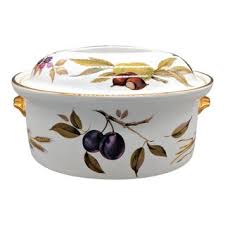
Evesham - oven to table ware
Manufacture
The methods and materials used in the manufacture of Porcelain at Royal Worcester have basically remained the same for the last 250 years. The differences in the ceramic bodies are determined by the proportions of the ingredients used and the temperatures they are fired at.
Raw Materials
- Soapstone: Mined in Cornwall and used as a substitute for China Clay
- China Clay: White clay also mined in Cornwall
- Feldspar: Very translucent glass like material that fuses the other materials together on firing
- Quartz: Translucent, helps to prevent distortion on firing
- Bone ash: Calcite cattle bone, gives bone china its strength, translucency and whiteness.
The raw materials are mixed with water to form a liquid clay or slip. Impurities are removed using electromagnets and most of the water is extracted to produce a solid clay body for hand or machine forming. Originally some items were thrown on a potter’s wheel or pressed onto moulds to ensure uniformity. Although manufacturing methods have changed very little since the eighteenth century, semi automation for most of these processes has taken over.
Slip casting: Objects such as teapots, vases, jugs and figures are made by pouring slip into plaster of paris moulds. The resultant casts are removed from the moulds assembled using more liquid slip and the rough edges smoothed away. Several moulds can be used to make up a complicated piece.
Kilns
After assembly the object has its first firing – Biscuit
Following the biscuit firing the object is either dipped or sprayed with liquid glaze. The glaze becomes clear and bright on firing.
Decorating
i) Hand Painting – painters worked in two sections, the senior department where all the free hand painting of scenes and fruit take place and the ornament department where the painting of figures to the original modellers standard.
ii) Printing – early designs were engraved on a copper plate and transferred onto tissue paper which was positioned on the object and then fired. During the 1920’s and 30’s print patterns were popular. Painters added enamel colours by hand to printed patterns.
iii) Lithographic printing – this is a full colour photographic process which is added to the object via a plastic film which burns away on firing leaving the printed patern.
iv) Gilding and Burnishing – the final process in ceramic manufacture. Gold is applied by brush, then fired and burnished.
Factory Backstamps
The basic marking system for Royal Worcester originated in 1862, the crowned crest of four linked Ws. In 1891 the words Royal Worcester England were added around the crest. Puce coloured crests were used from 1900 until 1940 when the black ink mark took over. Green crest marks were used for the Boer and First World War soldiers, and blue marks were printed on a limited number of figurines.
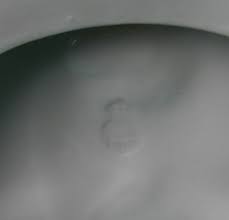
Impressed marks a die is pushed into the raw clay.
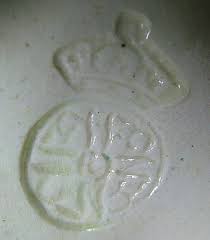
Moulded marks are raised pads applied to the base.

Printed marks were inked on after the glaze.
Dating Figurines – Printed marks
1892 and every subsequent year a dot was added near the crown.
In 1916 a puce coloured star replaced all the dots and a dot is then added for each subsequent year.
1928 small square
1929 diamond
1930 three horizontal lines
1931 two circles
1932 three circles
1933 to 1939 three circles and a dot is added for each subsequent year.
1940 – 1942 Black mark three circles and dots
1943-1944 no circles or dots BONE CHINA
1945-1948 bone china in small letters
1949 letter V is added
1950 letter W
1951-1963 a black dot was added
1964 onwards a shape system was introduced, firstly a circle and later a diamond.
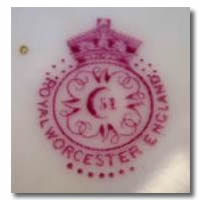
1910

1940

1970
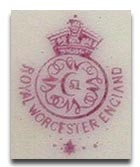
1919
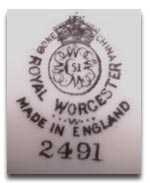
1956
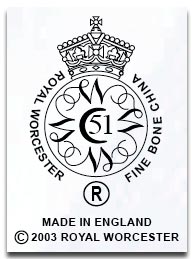
2003
The Modellers
James Hadley 1837 – 1903
He has been described by John Sandon as “probably the finest English modeller of all time”. Able to work in any form or style required, he is best known for his decorative figures, made in the 1870s and 1880s, when taste was shifting towards coloured models from the previous fashion for plain white.
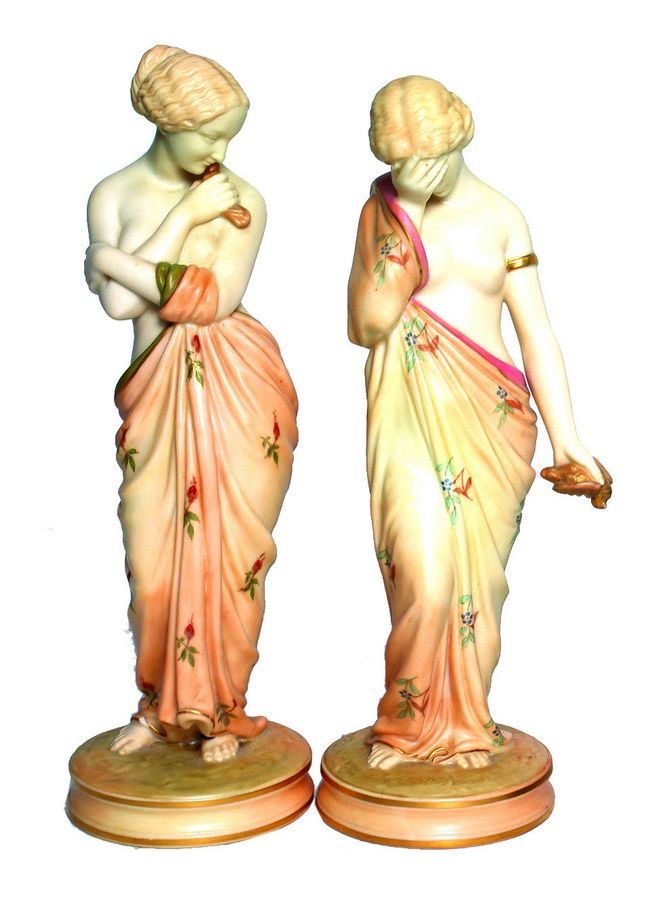
Joy and Sorrow
Frederick Gertner 1886 – 1960
Born and educated in Worcester and Royal College of art London. He started working for the factory in 1915 and produced a number of figures including the popular historical series.
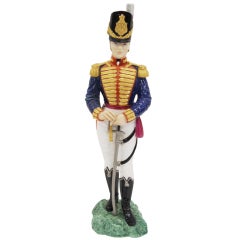
Historical Military Figures
Dorothy Doughty 1892 – 1962
Born in San Remo, Italy her father was the explorer and poet, Charles Doughty. Dorothy studied at Eastbourne School of Art and became a keen naturalist
and ornithologist. During the 1930s, whilst working for Royal Worcester, she designed a series of birds for the American market from her studio in Cornwall. These were made into large bone china models to be sold in limited numbers. Dorothy also designed a series of twenty-one British birds, and a set of twelve collector’s plates that were modelled in relief.
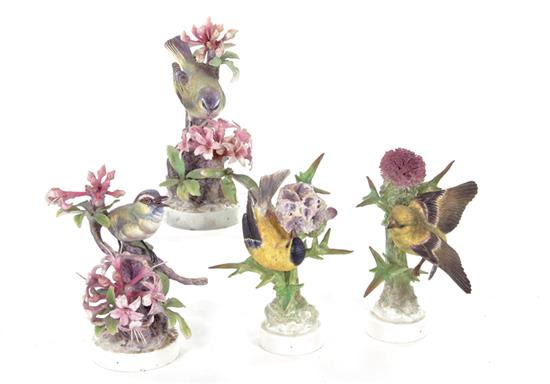
Finches
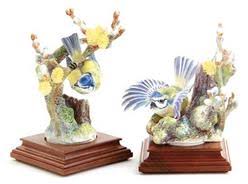
Blue Tits
Freda Doughty 1895 – 1972
Like her elder sister Dorothy, Freda was born in Italy and educated at the Eastbourne school of art. She designed over 100 models for Royal Worcester, most of which were very popular. Her figures were modelled from children who used to play in the garden of her home in Kent which she shared with her elder sister. She was the only modeller who consistently produced what the general public seemed to want. Her charming children figures have continued in their popularity today.

Months of the Year
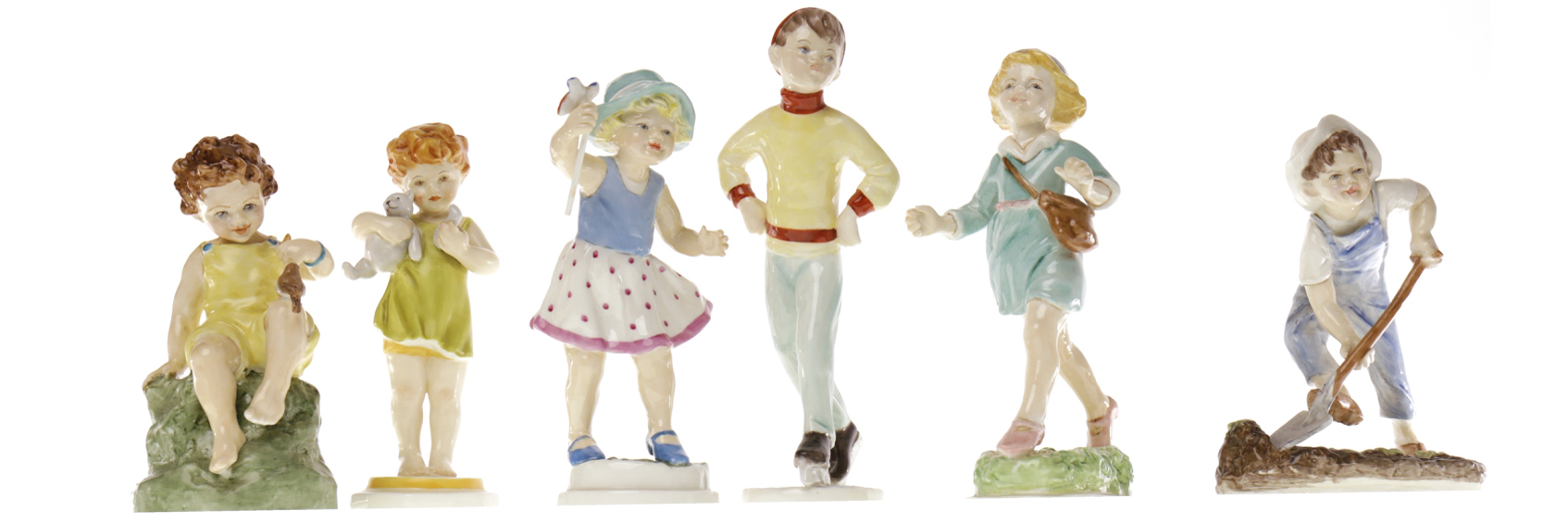
Days of the week
Doris Linder 1896 – 1979
Born in North Wales she studied sculpture at St. Martins, Rome and Calderon’s animal school. Her first models for Royal Worcester were of dogs and other small animals. In 1935, her horse group models were started, followed by a successful series of real life studies of horses and bulls. The Limited Editions designed and modelled by Miss Lindner reached the height of popularity in the 1960’s. Based in the Cotswolds, she worked untiringly until she was over 80 years old.
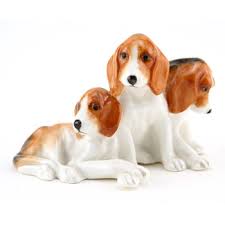
Hound Puppies

Cattle Series
Eileen Soper 1905 – 1990
Born in London Eillen was a successful etcher and illustrator of children’s and wildlife books. She produced a series of etchings, mainly of children playing, and became one of the youngest artists ever to exhibit at The Royal Academy. She also created illustrations for books, most notably for Enid Blyton. Eva, her elder sister, was a skilled potter producing many designs for Royal Worcester – mostly birds. Eileen’s illustrations of children were produced in pottery as the Wartime series by the factory in 1941.

Wartime Series
